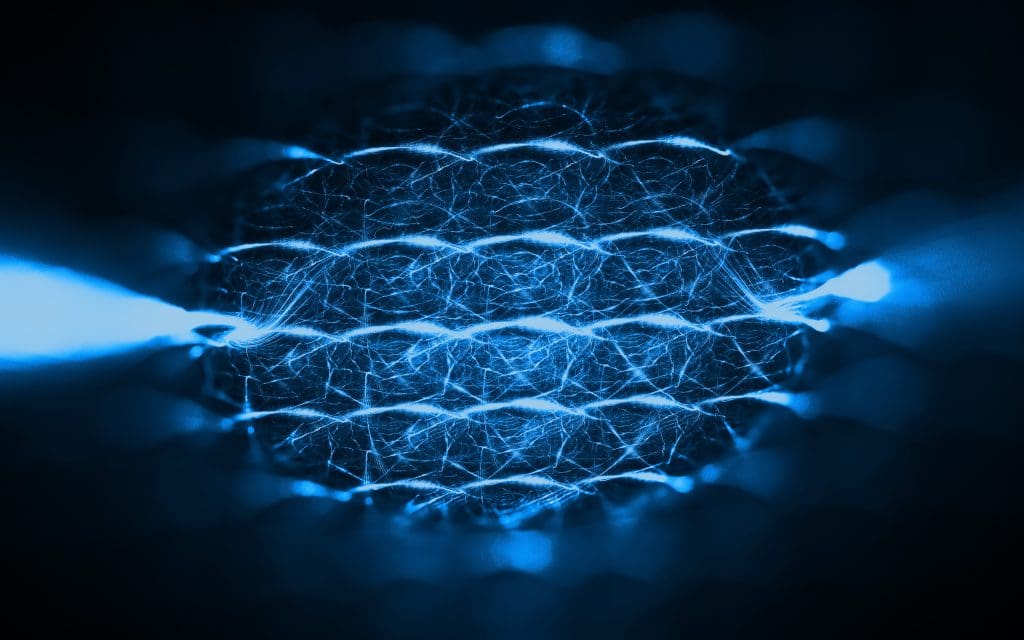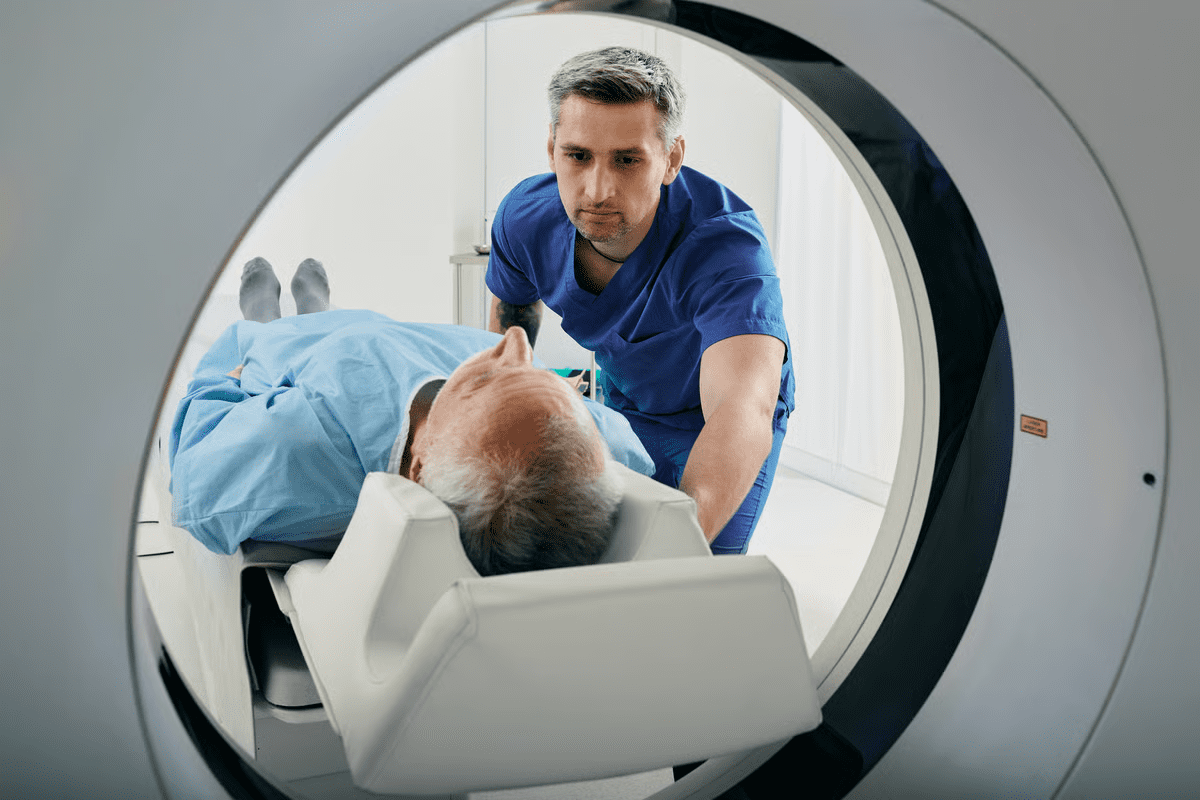Last Updated on September 16, 2025 by daniel
The idea of using neural stem cells for brain repair is becoming more popular. This is because they can grow new brain cells. Scientists are working on new treatments for brain diseases using stem cells.
Key Takeaways
- Stem cells can send anti-inflammatory signals to aid in brain repair.
- Neural stem cells play a key role in growing new brain cells.
- Stem cell therapy is promising for treating brain diseases.
- The immune system can be controlled by stem cells.
- Research is ongoing to find new treatments using stem cells for brain injuries.
The Science Behind Neural Stem Cells

Recent breakthroughs in neural stem cell research have opened new avenues for treating neurological disorders. Neural stem cells can turn into different types of brain cells, like neurons and astrocytes. This makes them key for understanding brain development and fixing damaged brain tissue.
Definition and Fundamental Properties
Neural stem cells can grow and change into the main brain cell types. Self-renewal lets them keep their numbers up. Differentiation allows them to become specialized cells. The main traits of neural stem cells include:
- Proliferation: They can multiply and grow their numbers.
- Multipotency: They can turn into several cell types.
- Responsiveness to environmental cues: They can react to signals that guide their growth and survival.
Discovery and Historical Context
The discovery of neural stem cells in the adult brain changed our view of the brain’s ability to grow new neurons. The idea of neural stem cells was first found in the early 20th century. But it wasn’t until the 1990s that we knew they were in the adult brain. Important moments include:
- The first finding of neural stem cells in the developing brain.
- The discovery of neural stem cells in certain adult brain areas.
- Learning about the environments that help neural stem cells survive and work.
Where Neural Stem Cells Reside in the Adult Brain
Research has found specific areas in the adult brain where neural stem cells live. These spots are key for making new neurons all our lives.
Neurogenic Niches: SVZ and SGZ
The adult brain has two main areas for making new neurons: the subventricular zone (SVZ) and the subgranular zone (SGZ). The SVZ is near the lateral ventricles, and the SGZ is in the hippocampus’s dentate gyrus.
- The SVZ is known for making lots of new neurons. These neurons go to the olfactory bulb.
- The SGZ makes neurons for the hippocampus. These help with learning and memory.
Both areas have special conditions that help neural stem cells grow and change into neurons.
Mosaic Organization in Different Brain Regions
Neural stem cells might also be in other brain parts, but not as much. The mosaic organization shows these cells play different roles in different areas. This suggests a complex role in keeping the brain healthy and fixing it when needed.
Research shows neural stem cells work differently in different parts of the brain. This variety helps the brain fix itself after injuries or diseases.
- Knowing where neural stem cells are can help make treatments more effective.
- Understanding how they are spread out is key to using them for brain healing.
Neural Stem Cells vs. Neural Progenitor Cells
It’s important to know the difference between neural stem cells and neural progenitor cells. They both help in brain growth and repair. But they have different roles and abilities.
Distinguishing Characteristics
Neural stem cells can grow into many types of brain cells. They can become both neurons and glial cells. On the other hand, neural progenitor cells are more specific in what they can become.
Key differences between neural stem cells and neural progenitor cells include:
- Self-renewal capacity: Neural stem cells can grow more than neural progenitor cells.
- Differentiation ability: Neural stem cells can turn into more types of cells, like neurons and glial cells.
- Proliferation rate: Neural progenitor cells grow faster but can’t renew themselves as much.
Roles in Brain Development and Maintenance
Both types of cells are important for brain growth and upkeep. Neural stem cells help make new brain cells, which is key for the brain’s health. They are important in areas like the subventricular zone (SVZ) and the subgranular zone (SGZ) of the hippocampus. In summary, both neural stem cells and neural progenitor cells are key for brain health. They have unique roles and abilities that make them important.
The Differentiation Capacity of Neural Stem Cells
Neural stem cells can turn into different types of cells, like neurons, astrocytes, and oligodendrocytes. This ability to change into various cells is a complex process. It is influenced by both inside and outside factors.
Neurons, Astrocytes, and Oligodendrocytes
Turning into different neural cell types is key for the brain and spinal cord to work right. Neurons send information through electrical and chemical signals. Astrocytes help support neurons and keep the blood-brain barrier strong. Oligodendrocytes wrap around axons to help signals move fast.
Environmental Factors Affecting Cell Fate
What neural stem cells become is greatly influenced by their environment. This includes growth factors, signaling molecules, and physical interactions with other cells. These elements guide the cells towards becoming specific types.
- Growth factors like BDNF and FGF-2 help neural stem cells survive and differentiate.
- Signaling pathways, such as Notch and Wnt/β-catenin, are vital in deciding cell fate.
- Physical interactions with other cells and the matrix also shape neural stem cell development.
Grasping these environmental factors is key to using neural stem cells for healing in medicine.
The Dormant State: Quiescent Neural Stem Cells
Quiescent neural stem cells are in a special dormant state. This state is controlled by complex molecular mechanisms. These cells can turn into different types of neural cells when needed.
Molecular Mechanisms of Quiescence
The quiescence of neural stem cells is kept in balance by molecular signals. Important factors include:
- Transcription factors that stop cell cycle progression.
- Signaling pathways that stop cell growth.
- Epigenetic modifiers that keep the chromatin in a dormant state.
These mechanisms keep quiescent neural stem cells ready to help repair the brain when needed..
Waking Up Neural Stem Cells: Activation Mechanisms
Learning how to wake up neural stem cells is key to their use in therapy. These cells can turn into many types, helping repair and grow the brain.
Natural Activation Pathways
Neural stem cells can start working through natural ways. These involve complex talks between cells and their surroundings. Some of these ways include:
- Exercise-induced activation
- Environmental enrichment
- Neurotransmitter modulation
Exercise boosts neural stem cell activity. It does this by raising growth factor levels and improving the brain’s health area.
Growth Factors and Signaling Molecules
Growth factors and signaling molecules are vital for starting neural stem cells. Important ones include:
- Fibroblast growth factor (FGF)
- Epidermal growth factor (EGF)
- Wnt/β-catenin signaling pathway
These can turn on neural stem cells in vitro and in vivo. This offers new ways to fix the brain.
Genetic and Epigenetic Regulators
Genetic and epigenetic regulators are also key for starting neural stem cells. They include:
- Transcription factors such as SOX2 and PAX6
- Epigenetic modifiers like histone deacetylases (HDACs)
- Non-coding RNAs
These regulators work together to decide what neural stem cells do. They help these cells respond to start-up signals.
Key Takeaways:
- Starting neural stem cells is a complex process with many steps.
- Natural ways, growth factors, and genetic regulators all help.
- Knowing how they work is important for making new treatments.
Neural Stem Cells for Brain Repair: Current Research
Neural stem cells are seen as a key to fixing the brain. Scientists are looking into how these cells can help with brain damage and diseases. They want to use these cells to repair and grow new brain tissue.
Endogenous Repair Strategies
One way to fix the brain is by using the body’s own repair powers. This means turning on the body’s neural stem cells to grow and change into the right types of cells. Studies show that certain helpers can make these cells work better, helping to fix and grow the brain.
For example, giving specific growth factors can help these cells grow and change. This can lead to better results in brain injury and disease models.
Transplantation Approaches
Another method is to put new neural stem cells into the damaged brain area. This aims to replace lost or damaged cells with healthy ones. Researchers are looking at different sources for these cells, like embryonic stem cells and induced pluripotent stem cells.
The success of this method depends on a few things. These include how well the new cells fit into the brain’s circuits and how well they match the body’s immune system.
Combination Therapies
Combination therapies are a promising way to improve brain repair. They mix neural stem cell transplantation with other treatments, like medicines or therapy, for better results. For instance, adding growth factors to cell transplantation might help the cells survive and work better.
Scientists are working to find the best mix of treatments. They want to create more effective ways to treat brain injuries and diseases by using neural stem cells’ power to heal.
Challenges in Harnessing Neural Stem Cells for Therapy
Neural stem cell therapy holds great promise, but it faces many hurdles. These cells can help repair damaged brains, but they must overcome several obstacles. Issues like how they differentiate, form tumors, and connect with brain circuits are major challenges.
Controlling Differentiation
One big challenge is making neural stem cells turn into specific brain cells. These cells can become neurons, astrocytes, or oligodendrocytes. But, it’s hard to control which type they become.
Scientists are trying different ways to guide their development. For example, certain growth factors can help them become neurons or glial cells.
Preventing Tumor Formation
Another big challenge is stopping these cells from turning into tumors. If they don’t fully develop, they can grow into tumors. To avoid this, scientists are working on ways to check cells before using them and to remove any that might cause problems.
Risk Mitigation Strategies: By carefully checking and purifying cells, the chance of tumors forming can be greatly reduced.
Integration with Existing Neural Circuits
For neural stem cells to work, they must connect with the brain’s existing circuits. This means they must survive, develop into the right cells, and work well with the brain’s network.
Scientists are studying how to help these cells integrate. They’re looking at how synaptic plasticity and matching the cells’ developmental stage with the host environment can help.
By tackling these challenges, researchers hope to make neural stem cell therapy safer and more effective. This could bring it closer to being used in medical treatments.
Stem Cell Treatments for Traumatic Brain Injury
Stem cell therapy is showing great promise for treating traumatic brain injuries. These injuries happen when the brain is damaged by outside forces. This damage can lead to problems with thinking, feeling, and moving.
Stem cells might offer a new way to help people recover from these injuries. They can grow into different types of cells, replacing damaged ones. This could help fix the brain and improve how people feel and function.
Preclinical Evidence
Studies in animals have shown that stem cells can help with TBI recovery. They can turn into different types of cells, which can replace damaged ones. This helps repair the brain.
Preclinical evidence also shows that stem cells can improve thinking skills, reduce swelling, and help the brain adapt. This is all important for healing.
- Stem cells support the growth of new neurons, aiding recovery.
- They also reduce swelling and inflammation, which can make brain injuries worse.
- Stem cells help create new blood vessels, which is important for getting nutrients and oxygen to the brain.
Current Clinical Trials
Many clinical trials are now testing stem cell treatments for TBI. These trials are important for making sure these treatments are safe and work well. Ongoing research is focused on finding the best ways to use stem cells to help patients.
- Phase I trials check if stem cell treatments are safe for TBI patients.
- Phase II trials look at how well these treatments work and the right amount to use.
- Some trials are also looking at using stem cells with other treatments to see if they work better together.
Patient Outcomes and Case Studies
Even though trials are ongoing, early results are promising. Some patients have seen better thinking, moving, and overall feeling after treatment. Notable case studies show that even severe TBI cases can see big improvements. The future of stem cell treatments for TBI looks bright. With more research and trials, these treatments could become a big part of TBI care. As we learn more, stem cell therapy could help many people recover from brain injuries.
Neural Stem Cells Outside the Brain
Neural stem cells have been found outside the brain. This opens up new research paths and possible treatments.
Peripheral Nervous System Sources
The peripheral nervous system (PNS) is full of neural stem cells. These cells are in dorsal root ganglia and peripheral nerves.
Applications Beyond Neurology
Neural stem cells outside the brain have big implications for medicine. They could help in many areas, not just brain health.
- Regenerative medicine: Fixing damaged tissues.
- Cancer therapy: Going after tumor cells.
- Tissue engineering: Making fake tissues for transplants.
Harvesting and Banking Neural Stem Cells
Getting and storing neural stem cells is a detailed process. It’s key for moving research and treatments forward in regenerative medicine.
Isolation Techniques
There are several ways to get neural stem cells, like fluorescence-activated cell sorting (FACS) and magnetic-activated cell sorting (MACS). These methods pick out certain cells by their surface markers.
Which method to use depends on where the cells come from and what they’re for. FACS is very precise and can sort cells by many criteria. MACS is simpler and sorts cells by specific antigens.
Cryopreservation Methods
Cryopreservation is vital for keeping neural stem cells alive for later use. There are two main ways: slow freezing and vitrification. Slow freezing cools down slowly to avoid ice crystals. Vitrification uses lots of cryoprotectants to make a glassy state.
Ethical and Regulatory Considerations
Getting and storing neural stem cells brings up many ethical and legal issues. These include informed consent from donors, the source of the stem cells, and the risk of commercialization. Laws differ by country, but most have strict rules to keep things safe and ethical.
In the United States, the FDA watches over the use of human stem cells. This includes how they’re collected, processed, and stored. Following these rules is essential for the safety and legitimacy of neural stem cell banking.
The Future of Neural Regeneration Therapies
The future of fixing damaged brain tissue is looking bright. Advances in emerging technologies and new ways to treat are leading the way. It’s clear that we can make big strides in repairing the brain.
Emerging Technologies
New technologies are key in the future of brain repair. These include:
- Gene editing technologies like CRISPR which can change genes for better brain healing.
- Biomaterials that help new brain cells grow by providing a framework.
- Nanotechnology, which helps deliver treatments right to the brain’s damaged spots.
Personalized Medicine Approaches
Personalized medicine is changing how we treat brain injuries. It means:
- Using genomic data to find the best treatments for each person.
- Creating stem cell therapies that match each patient’s needs.
- Developing personalized rehabilitation plans based on each person’s brain.
Integrating with Other Treatment Modalities
Combining brain repair with other treatments is also important. This includes:
- Pharmacological interventions to make treatments work better.
- Physical therapy and rehab to help patients regain function.
- Cognitive training to help the brain adapt and change.
By mixing brain repair with these other treatments, we can offer complete care. This addresses the complex needs of those with brain injuries or disorders.
Conclusion
Neural stem cells are very promising for fixing and growing the brain. Scientists are learning more about how they work. They are figuring out how these cells start, change, and fit into the brain’s circuits.
Stem cell therapy could help a lot with brain injuries, diseases, and other brain problems. As we learn more about these cells, we’ll see new treatments come up.
Looking ahead, we might see treatments made just for each person. We could also use these cells in new ways. By studying neural stem cells, we can find better ways to treat brain diseases. This could lead to better health for many people.
FAQ
What are the potentially benefits of stem cell therapy for brain damage?
This therapy might help fix brain damage. It could improve thinking skills and make the brain healthier. It does this by replacing bad cells and helping the brain adapt.
Can stem cells regrow brain cells?
Yes, they can. Neural stem cells can turn into new brain cells. This could replace damaged or lost cells.
What is the future of neural regeneration therapies?
The field is growing fast. New technologies and personalized treatments are coming. These might work better with other therapies like gene therapy and rehab.
What are the challenges associated with using neural stem cells for therapy?
There are a few big challenges. It’s hard to control how they grow, prevent tumors, and make sure they fit in with the brain’s circuits.
How are neural stem cells harvested and stored?
These cells can come from different sources. They can be taken from fetal tissue, adult brains, or made from other cells. They are frozen and kept in banks for later use.
Are there neural stem cells outside the brain?
Yes, these cells can also be found in the body’s nervous system. They are in the olfactory epithelium and the enteric nervous system.
Can neural stem cells be used to treat traumatic brain injury?
Scientists are studying if these cells can help with brain injuries. Early studies look promising. Now, they are testing these cells in people to see if they work.
What is the difference between neural stem cells and neural progenitor cells?
Neural stem cells can grow and change into many types of brain cells. Neural progenitor cells can only grow into a few types of cells. They are more set in their path.
Where are neural stem cells found in the adult brain?
In adults, these cells live in certain areas. The subventricular zone (SVZ) and the subgranular zone (SGZ) of the hippocampus are where they are found. These places are called neurogenic niches.
What are neural stem cells, and what is their role in brain repair?
Neural stem cells are special cells in the brain. They can turn into different types of brain cells. They help the brain grow, stay healthy, and fix itself.





